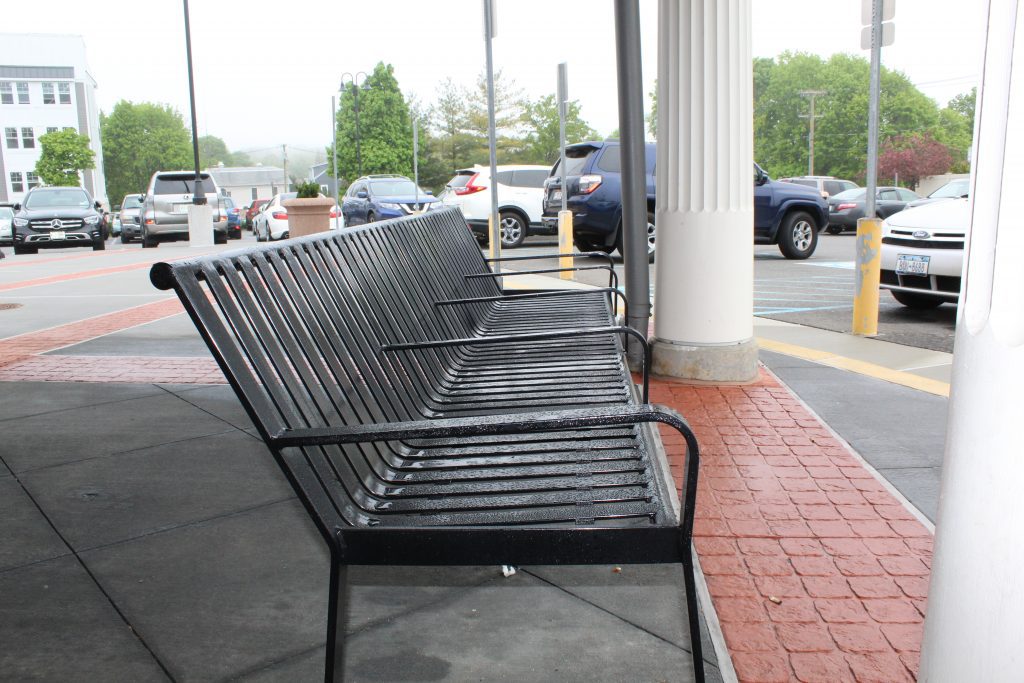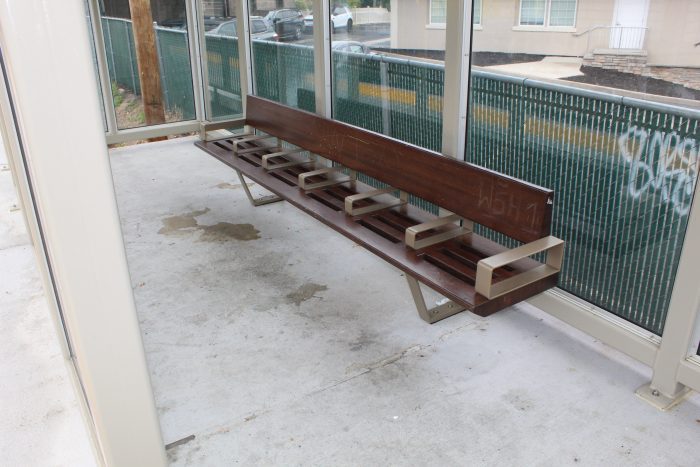
By Raymond Janis
During our investigation of seating shortages at Port Jefferson train station, TBR News Media took a closer look at the emerging field of hostile architecture, a design movement that employs subtle and often harmful means to alter public spaces.
Robert Rosenberger, associate professor in the School of Public Policy at the Georgia Institute of Technology, is an expert on the subject of hostile design. He said through architecture, urban designers today can manipulate the environment to ward off certain populations.
“Hostile architecture refers to when objects in public spaces are designed in a way to control those spaces and push out or control the behavior of already vulnerable groups,” he said in a phone interview. “Benches redesigned to deter people from sleeping on them is one of the main examples of hostile architecture, and we mainly see that done through the addition of armrests.”
The issue of hostile architecture was first observed on social media, according to Rosenberger. However, the issue gained traction among journalists and academics is now being explored as its own discipline.
Professor Setha Low is director of The Public Space Research Group at The Graduate Center, City University of New York. She researches hostile design and works with design students to envision public spaces that can be more user-friendly and inclusive.
Hostile architecture is not only disruptive for the individuals that it targets. Low suggests that other vulnerable demographics can also get caught within the crosshairs.
“It doesn’t just make it hostile or unwelcoming for individuals who might want to sleep there,” she said. “It also doesn’t allow older people who might want a place to sit.”
Not all public spaces are equally public and accessible. In cases where hostile design is practiced, public environments can be highly restrictive and unwelcoming, and effectively private.
“Public space is only as public as you make it,” Low said, adding. “There are a lot of ways we privatize environments and many things that can be done to reduce the publicness of the public space.”
Hostilely designed structures can be difficult to identify as they often blend into the built environment. Because they affect only certain populations, those unaffected can be oblivious to the problem.
“People who are not targeted by these designs sometimes don’t even recognize that they are there,” Rosenberger said. “Something that’s interesting about hostile architecture is that once you see it for the first time, you start seeing it everywhere.”
While there are laws regulating public spaces to ensure handicap accessibility, such as the Americans with Disabilities Act, there are currently no laws that prohibit hostile architecture. “I don’t see anything at the national or state level where there is some kind of prohibition on this kind of design,” Rosenberger said.‘Our technologies are going to have values built into them. We have to actively decide the values that we want because otherwise, we have these other values creeping in that we may not even notice.’ — Robert Rosenberger
While hostile design most noticeably includes adding materials, such as armrests along public benches, it can also take form through subtraction.
“One of the trends in hostile architecture is removing objects from spaces rather than adding things to those objects,” Rosenberger said. “It’s a kind of design through removal, an architecture that involves no architecture.” He added, “Even if you are in a space and there are no objects there, that can be a form of hostile design as well.”
For Low, hostile architecture is not a design issue. Rather, it is a human issue which speaks to the ways in which people interact with one another. Architecture, therefore, is merely the reflection of the values of a society.
“I don’t think it’s the architecture going wrong,” she said. “I think we’re in a moment in time when some of the more negative impulses and illiberal activities are being tolerated when they wouldn’t have been in other times.” She added, “How we build our environment — our villages, our benches and everything else — is directly related to how we view ourselves and our society at that moment.”
Rosenberger sees two principal values embodied by the hostile architecture movement. “The first one would be a kind of technocratic control, a value of controlling spaces and who is in those spaces,” he said. “The other is a value of washing our hands of that and saying, ‘There’s nothing to see here — the space is innocent.’” He added, “The spaces and the objects are not innocent. They may look innocent, but actually we have values built into that space.”
Low believes public space is always designed with the intent to evoke a certain feeling or experience from the user. For this reason, a public space cannot be innocent or neutral. “The built environment is never neutral,” she said. “How do you feel in different places? Why do you feel that way and what is it in the built environment that is making you feel either encouraged to come or not?”
Rosenberger suggested that to overcome hostile design, a community must first define its own values and then rebuild the environment to express them.
“Our technologies are going to have values built into them,” he said. “We have to actively decide the values that we want because otherwise, we have these other values creeping in that we may not even notice.”





